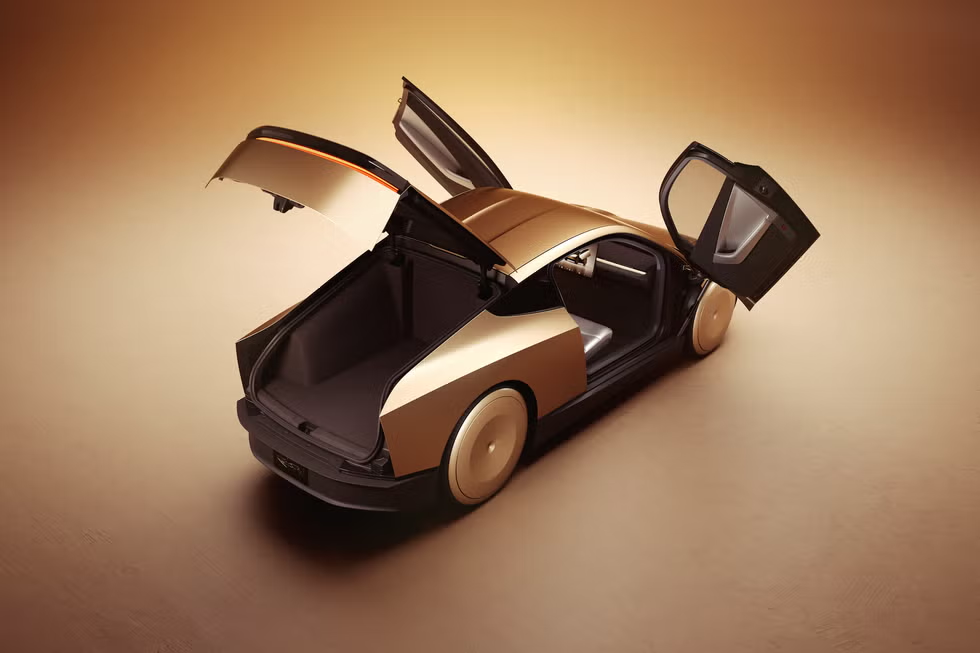On October 11, 2024, Tesla held its much-anticipated “We, Robot” event in Burbank, California, where CEO Elon Musk introduced the Cybercab, a groundbreaking robotaxi designed to transform the landscape of autonomous transportation. This unveiling marks a significant milestone in Musk’s long-term vision for Tesla, showcasing the company’s commitment to AI and robotics.
The Cybercab: A Visionary Introduction
At the event, Musk made a striking entrance in a prototype of the Cybercab, emphasizing its futuristic design and capabilities. The vehicle is expected to enter production by 2026 and will retail for under $30,000, a price point aimed at making autonomous transport accessible to a wider audience. This is particularly noteworthy given that the current entry-level Model 3 is priced above $42,000, especially following the discontinuation of its base variant.
Musk’s announcement comes with cautious optimism, as Tesla has faced criticism for previously overpromising on vehicle pricing and timelines. The Cybertruck, initially projected to cost under $50,000, now starts at approximately $80,000, raising skepticism among potential buyers regarding the Cybercab’s anticipated pricing.
The Robovan: Expanding Tesla’s Fleet
In addition to the Cybercab, Tesla introduced a concept for the Robovan, designed to accommodate up to 20 passengers. This larger autonomous vehicle aligns with Tesla’s strategy to diversify its offerings in the autonomous transport sector. Both the Cybercab and Robovan underscore Tesla’s ambition to develop a comprehensive network of self-driving taxis, appealing to consumers looking to rent or utilize autonomous vehicles through the Tesla network.
AI Features and Design Innovations
The Cybercab is engineered as a fully autonomous vehicle, notably lacking traditional controls such as a steering wheel and pedals. Its innovative design includes butterfly-wing doors and a compact cabin intended for two passengers, reflecting a commitment to modern aesthetics and functionality. However, this design also necessitates regulatory approval before mass production can commence, highlighting the challenges Tesla faces in bringing this vision to fruition.
Musk is confident that the Cybercab will not only pave the way for a fleet of self-driving taxis but also integrate seamlessly into the lives of Tesla owners. Through an app, Tesla owners could list their vehicles as part-time taxis, allowing them to generate income when not in use. This dual-purpose model positions Tesla as a contender in the competitive autonomous taxi market, directly challenging established services like Waymo and Cruise.
Tesla’s Unique Approach to Autonomous Driving
Tesla plans to utilize its camera-based Full Self-Driving (FSD) system, differentiating itself from competitors that rely on expensive lidar and radar technology. While this strategy aims to minimize costs, it has drawn scrutiny from analysts concerned about safety, particularly in adverse driving conditions. Critics argue that Tesla’s reliance on cameras might not provide sufficient data for safe navigation, especially during heavy rain or bright sunlight.
Overcoming Past Challenges
Musk first hinted at the potential for robotaxis back in 2019, projecting that they would be operational within a year. However, delays stemming from challenges in developing FSD technology led to a significant postponement of these plans. As Tesla seeks to rekindle excitement around its autonomous vehicle initiatives, Musk has reiterated that Tesla should be perceived as an AI robotics company rather than merely an automaker.
Investors and analysts at the “We, Robot” event were eager to know how quickly Tesla could ramp up production of the Cybercab, what costs would be involved, and how much revenue could be generated from this innovative service. As Tesla faces increased competition in the electric vehicle (EV) market, the success of its robotaxi could serve as a crucial boost to the company’s revenue, particularly as it navigates potential declines in vehicle deliveries.
Navigating a Competitive Landscape
Tesla is not the only player in the robotaxi space; competitors such as Alphabet’s Waymo, General Motors’ Cruise, and Amazon’s Zoox have also invested significantly in autonomous technology. Each company has faced its own set of challenges, including regulatory hurdles and the complexities of developing reliable technology. These obstacles have led to substantial financial losses for some, making the autonomous transport market highly competitive.
Tesla’s own FSD software has come under scrutiny after being linked to numerous accidents, raising questions about the safety of its autonomous driving capabilities. With over 1,000 reported crashes involving Tesla’s FSD, including some fatal incidents, regulatory bodies are increasingly scrutinizing the software’s performance and safety measures.
Future Aspirations for Tesla
Despite these challenges, Musk remains optimistic about Tesla’s trajectory in the autonomous space. The “We, Robot” event not only showcased the Cybercab but also hinted at other exciting developments, including a lower-cost electric vehicle and advancements related to Tesla’s humanoid robot, Optimus. Musk envisions the Optimus project becoming commercially viable by 2025, aiming to perform various tasks and enhance productivity.
The event’s title, “We, Robot,” pays homage to the influential science fiction writer Isaac Asimov and underscores Musk’s ambition to weave AI into the fabric of Tesla’s future. This vision reflects a desire to position Tesla as a leader in AI-driven technology, extending beyond traditional vehicle manufacturing.
Engaging with the Audience
For those eager to follow Tesla’s developments, the “We, Robot” event was live-streamed on platforms such as X (formerly Twitter) and YouTube, providing global access to the unveiling. While in-person attendance was limited to select shareholders, influencers, and Tesla enthusiasts, the digital outreach allowed for broader engagement with fans and potential investors alike.
Conclusion
As Tesla embarks on this new chapter with the Cybercab and the broader robotaxi vision, it faces a landscape filled with both opportunities and challenges. The potential for transformative change in urban transport is significant, yet regulatory approval, safety concerns, and competition will be critical factors in determining the success of Tesla’s autonomous ambitions. With Elon Musk at the helm, Tesla is poised to navigate this complex terrain, aiming to redefine the future of mobility.
